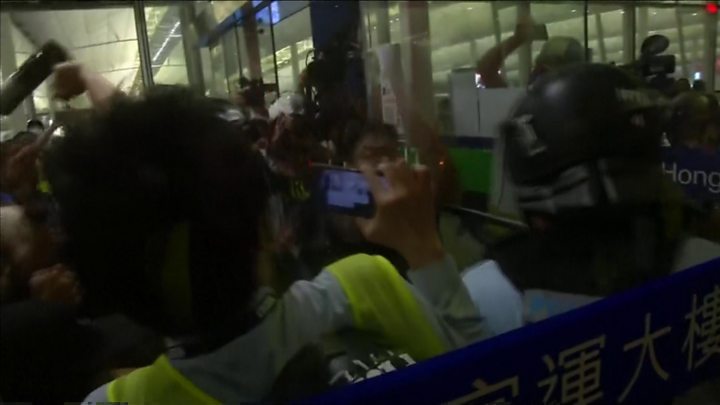
Hong Kong International Airport saw chaotic scenes on a second consecutive day of massive anti-government protests that have paralysed one of Asia's key transport hubs.
Squads of riot police arrived shortly before midnight after thousands of demonstrators again flooded the terminal buildings during the day.
Flight departures were brought to a standstill amid scuffles.
At least three men were mobbed inside the airport by protesters.
They were said to be holding identity cards showing they were police officers from mainland China.
Hong Kong police have admitted deploying officers disguised as anti-government protesters during the unrest in the city.
But the editor of China's Global Times newspaper said one of those attacked was one of his reporters who was merely doing his job.
Why the protests?
The airport, one of the world's busiest, has been the site of daily protests since Friday. It has become the latest focus of mass political unrest in Hong Kong that began 10 weeks ago and shows no signs of abating.
The wider anti-government protests started in June in response to a proposed extradition bill, which has now been suspended, but have evolved into a more demanding pro-democracy movement. They are being fuelled by fears that the freedoms Hong Kong enjoys as a special administrative region of China are being eroded.
The city's leader, Carrie Lam, earlier issued a fresh warning to protesters.
Ms Lam said Hong Kong had "reached [a] dangerous situation" and that violence during protests would push it "down a path of no return".
Meanwhile, Chinese state media have published images of convoys of military police gathering in the border city of Shenzhen, says the BBC's Stephen McDonell, who is in Hong Kong.
The official Xinhua news agency said "mobsters" had created "an atmosphere of terror" on Hong Kong's streets.
- How could China intervene in protests?
- The background you need on the protests
- Hong Kong protests in 300 words
Fear of infiltrators
The BBC's Jonathan Head reports from Hong Kong airport
The activists are on edge knowing that China has vowed to punish them and that riot police are just outside the terminal.
Fear of infiltrators is everywhere. Suspected undercover officers were mobbed and sometimes beaten. An attempt by a police delegation to get them out turned into a furious confrontation.
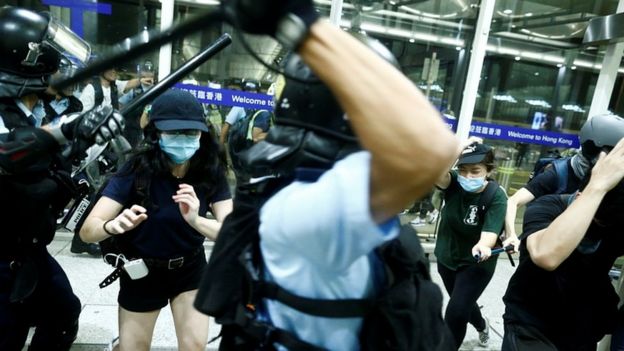 REUTERS
REUTERS
There were cheers as protesters disabled the airport security cameras. But after this, what next?
This protest movement has proved nimble and inventive, capable of bringing one of Asia's biggest transport hubs to a standstill. But the Hong Kong government has ignored their demands and at some point, surely, it will try to drive them out.
What happened inside the airport?
Despite the latest warnings from officials, crowds gathered at the airport again on Tuesday.
Protesters used luggage trolleys to build barriers and staged a mass sit-down, bringing chaos to the departures area.
Some travellers were clearly distressed and angered by the disruption.
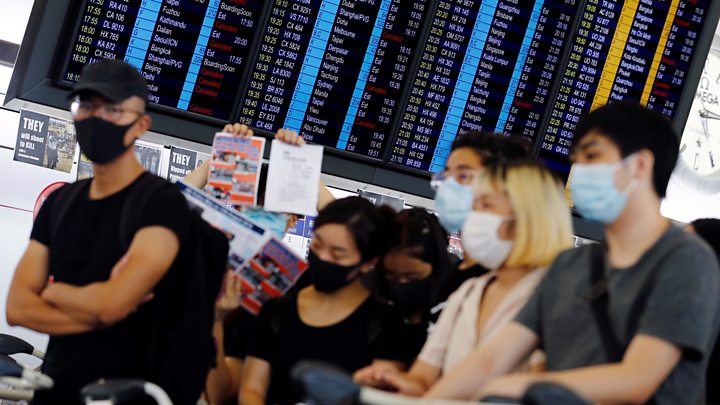
Hong Kong airport officials then announced that all checking-in for flights was suspended from 16:30 local time (10:30 GMT).
In a statement on the airport's website, passengers were advised to leave the terminal buildings "as soon as possible".
The South China Morning Post reported that the Airport Authority had been granted a court injunction to remove protesters. It was not clear how the injunction would be enforced.
 AFP
AFP
Some airlines, including flagship airline Cathay Pacific, cancelled dozens of flights on Tuesday before the latest closures were announced.
Some protesters held signs apologising to passengers for the inconvenience caused by their demonstrations. Others wore eye bandages in solidarity with an injured protester and brandished slogans criticising the police's deepening crackdown.
Later, amid tense scenes, there were sporadic clashes between police and protesters outside the airport.
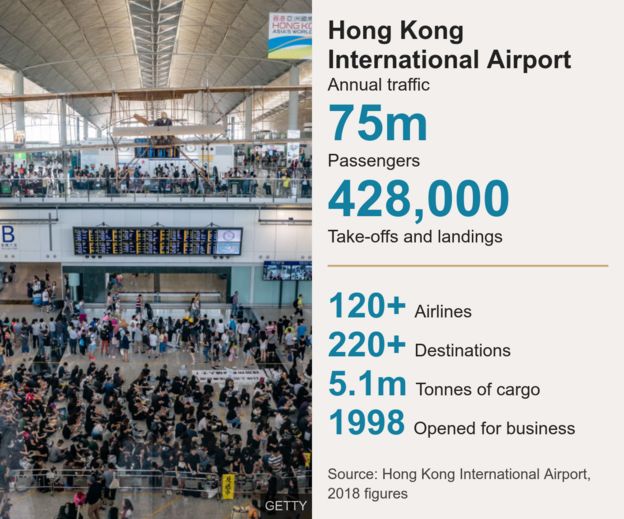

The police, wearing riot gear and brandishing truncheons, used pepper spray against some protesters as they briefly entered the terminal buildings to help evacuate an injured man.
In one video posted to social media, a policeman is seen frantically drawing his gun at protesters after being attacked with his own truncheon.
Protesters had boxed him into a corner after prying the baton from his hands during a violent skirmish. After collapsing to the ground, the policeman was eventually dragged to safety by his fellow officers.
Wall Street journalist Mike Bird, who posted the footage to Twitter, wrote that he was "astonished" nobody was killed on Tuesday night.

Many of the protesters had left the airport late on Tuesday, as they did on Monday before returning in numbers.
What has been the reaction?
Ms Lam addressed the latest violence at a hostile press conference on Tuesday.
"Take a minute to think, look at our city, our home - do you all really want to see it pushed into an abyss?" she said, at times appearing close to tears.
Her comments echoed similar remarks by an official from the Chinese Liaison Office in Hong Kong, who said on Monday that the city would slide "into a bottomless abyss if the terror atrocities are allowed to continue".
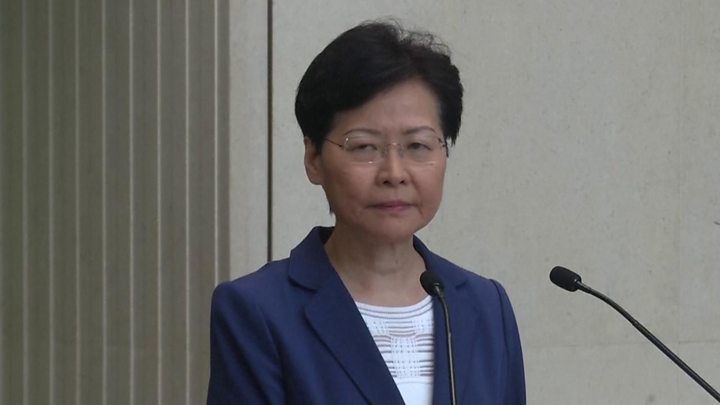
Local journalists unleashed a barrage of questions in Cantonese and English toward Ms Lam, many condemning her response to the unrest.
She told members of the media she was "heartbroken" by reports of serious injuries at last weekend's protests, but appeared to defend the police from claims they used disproportionate force, saying they were acting under "extremely difficult circumstances".
Later, US President Donald Trump said on Twitter that US intelligence had informed him of a border deployment by Chinese troops, adding: "Everyone should be calm and safe."

Speaking to reporters, he described the situation as "tricky" and said he hoped it would end peacefully.
"I hope it works out for everybody, including China. I hope it works out peacefully. I hope nobody gets hurt. I hope nobody gets killed," he said.
The UN High Commissioner for Human Rights, Michelle Bachelet, urged authorities to exercise restraint during protests - amid criticism of the police response.
"Officials can be seen firing tear gas canisters into crowded, enclosed areas and directly at individual protesters on multiple occasions, creating a considerable risk of death or serious injury," she said in a statement that called for an investigation.
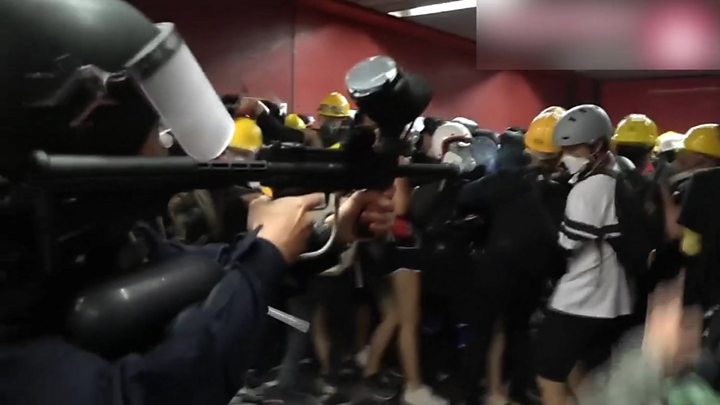
The comments came after ugly footage emerged of confrontations on Sunday. A number of people, including a police officer, were injured in the clashes.
Are you at Hong Kong airport? Email haveyoursay@bbc.co.uk
Please include a contact number if you are willing to speak to a BBC journalist. You can also contact us in the following ways:
- WhatsApp: +44 7756 165803
- Tweet: @BBC_HaveYourSay
- Send pictures/video to yourpics@bbc.co.uk
- Upload your pictures / video here
- Text an SMS or MMS to 61124 or +44 7624 800 100
- Please read our terms of use and privacy policy
Or use the form below:
China
Trump delays some tariffs on Chinese imports
- 13 August 2019
- Business
Hong Kong police admit using 'disguised' officers
- 13 August 2019
- China
Hong Kong police arrest bloodied protester
- 12 August 2019
- China
Features
Elsewhere on the BBC
Football phrases
15 sayings from around the world



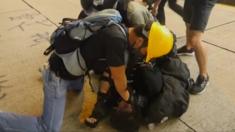
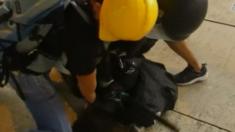
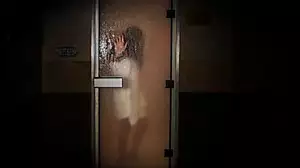
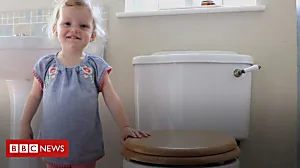
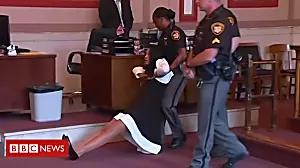
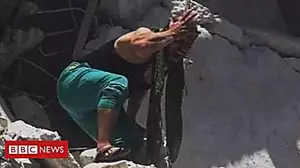
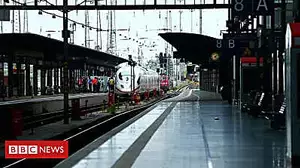

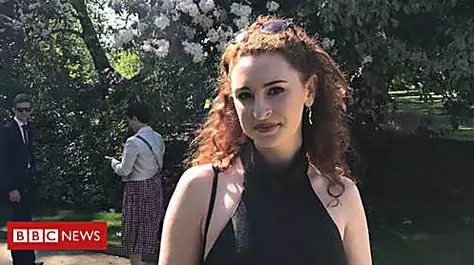
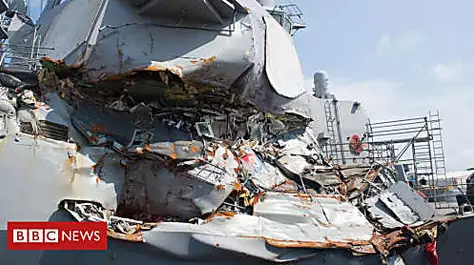

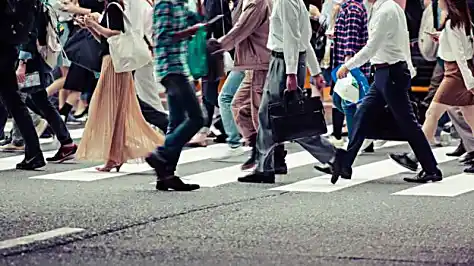
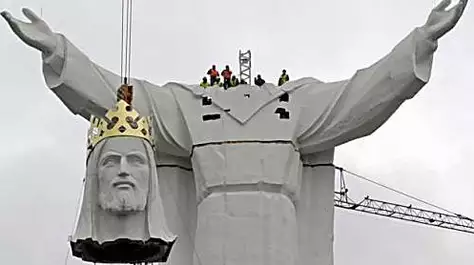
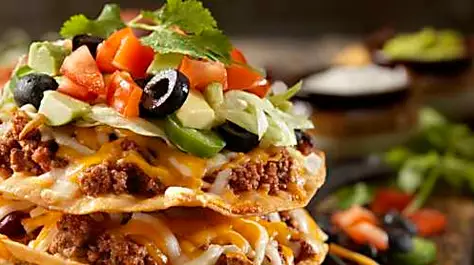



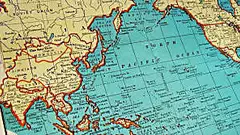
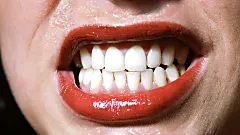

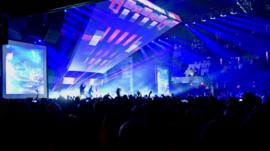
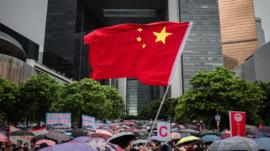
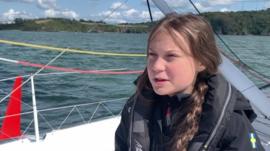
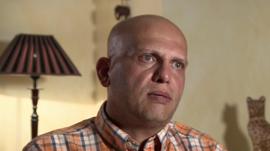

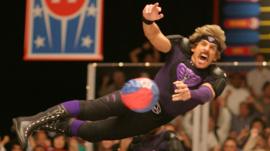


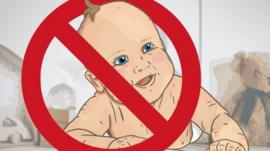

No comments:
Post a Comment